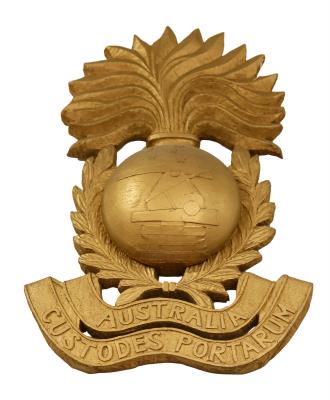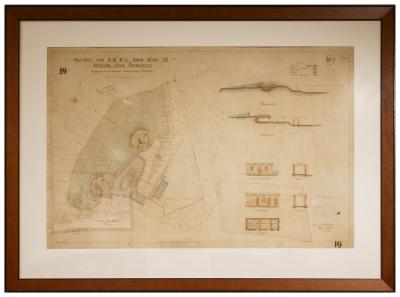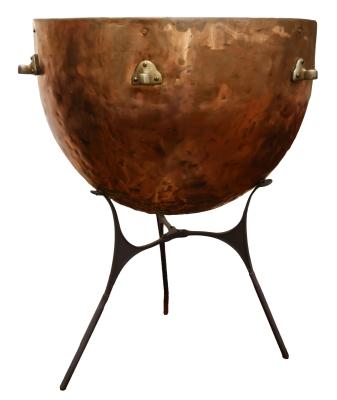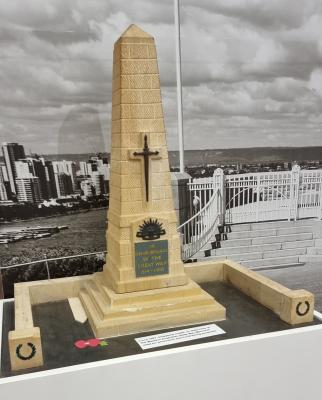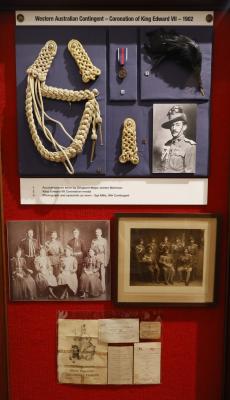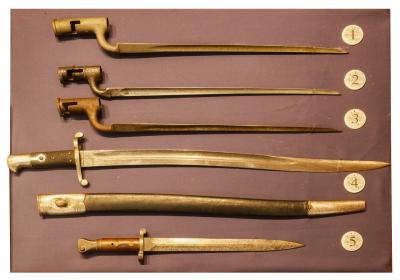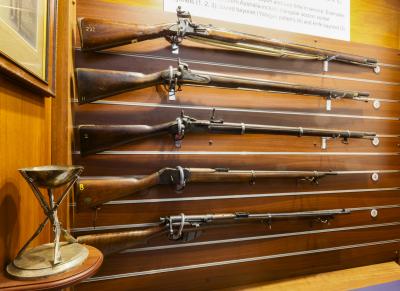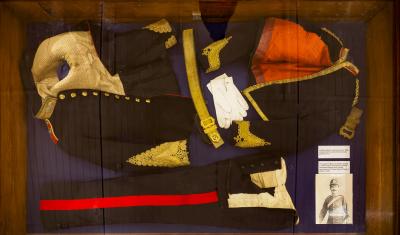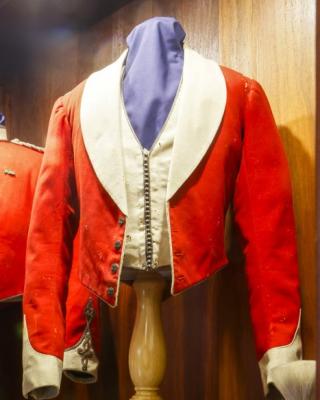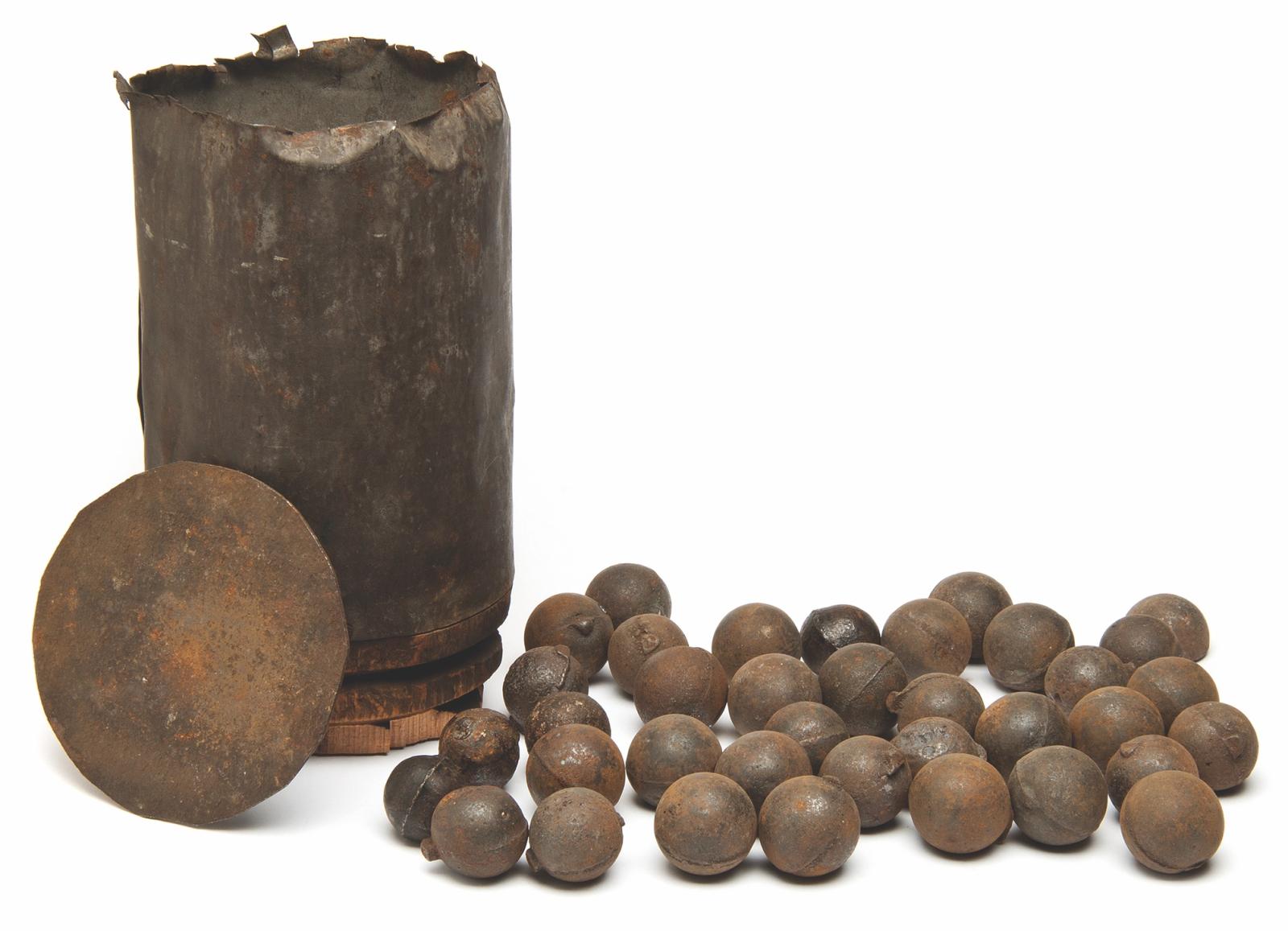Pre 1914, Case / Cannister Shot for 7 inch Coast Defence Gun, 1877
The Rifled Muzzle Loading 7-inch guns were various designs of medium-sized rifled muzzle-loading guns used to arm small to medium-sized British warships in the late 19th century, and some were used ashore for coast defence.
The Kings Park guns, familiarly known as “bottle guns”, bore the official designation of RML (Rifled Muzzle Loading), 7 inch (calibre) 6.5 ton, Mk 1 guns. They fired a 50.8 kg shell to a range of about 3650 metres.The popular name bottle gun is based on their appearance. Dating from 1866, the two guns were manufactured by the Royal Ordnance Factory in England. The design was pioneered by Sir William Armstrong and involved a wrought-iron (later mild steel) tube surrounded by a number of wrought-iron strengthening coils shrunk over the inner tube to keep it under compression. The heavier of the two was placed on a steel mounting for coastal defence and the other had a timber carriage, having originally served onboard HMS Dreadnought a wooden first-rate battleship, launched 1857 and scrapped in 1875. Even before the guns arrived onboard the SS Suffolk in 1881, they were considered obsolete. They were landed on the beach near Fremantle where they lay undisturbed for a number of years, as colonial financial constraints prevented their being adapted for service use
Details
Details
Canister shot is a kind of anti-personnel artillery ammunition. It has been used since the advent of gunpowder-firing artillery in Western armies, and saw particularly frequent use on land and at sea in the various wars of the 18th and 19th century. Canister is still used today in modern artillery. Canister shot consists of a closed metal cylinder typically loosely filled with round lead or iron balls packed with sawdust to add more solidity and cohesion to the mass and to prevent the balls from crowding each other when the round was fired. The canister itself was usually made of tin, often dipped in a lacquer of beeswax diluted with turpentine to prevent corrosion of the metal. Iron was substituted for tin for larger-caliber guns. The ends of the canister were closed with wooden or metal disks. When fired, the canister disintegrates and its shards and projectiles spread out in a conical formation, causing a wide swath of destruction.
This exhibit is located in the Pre 1914 Gallery at the Australian Army Museum of Western Australia.
Australian Army Museum of Western Australia
Australian Army Museum of Western Australia
Other items from Australian Army Museum of Western Australia
- Pre 1914, Large Wooden Carving of Australian Garrison Artillery Badge, 1901 - 1912
- Pre 1914 - Original Plan for Two 6 inch Guns at Arthur's Head, Fremantle Port, 1903 (1 of 2)
- Pre 1914 - Original Plan for Two 6 inch Guns at Arthur's Head, Fremantle Port, 1903 (2 of 2)
- Pre 1914, Timpani or Kettle Drum
- World War 1 - Fundraising Model of State War Memorial, Kings Park, 1929
- Pre 1914, Edward VII Coronation Display, 1902
- Pre 1914, Technology Display, Bayonets 1730 - 1903
- Pre 1914, Technology Display, Long Arms 1730 - 1903
- Per 1914, Chase Family Display, CHASE VC, 28 Bombay Native Infantry and Bengal Staff Corps and 691 CHASE, 2nd WA Mounted Infantry and 16 Battalion AIF
- Pre 1914, Military Tailoring and Gold Lacework Display
- Pre 1914, Mess Dress Jacket, JOSE, Geraldton Rifle Volunteers, 1891
- Pre 1914, Patrol Jacket, JOSE, Geraldton Rifle Volunteers, 1892
